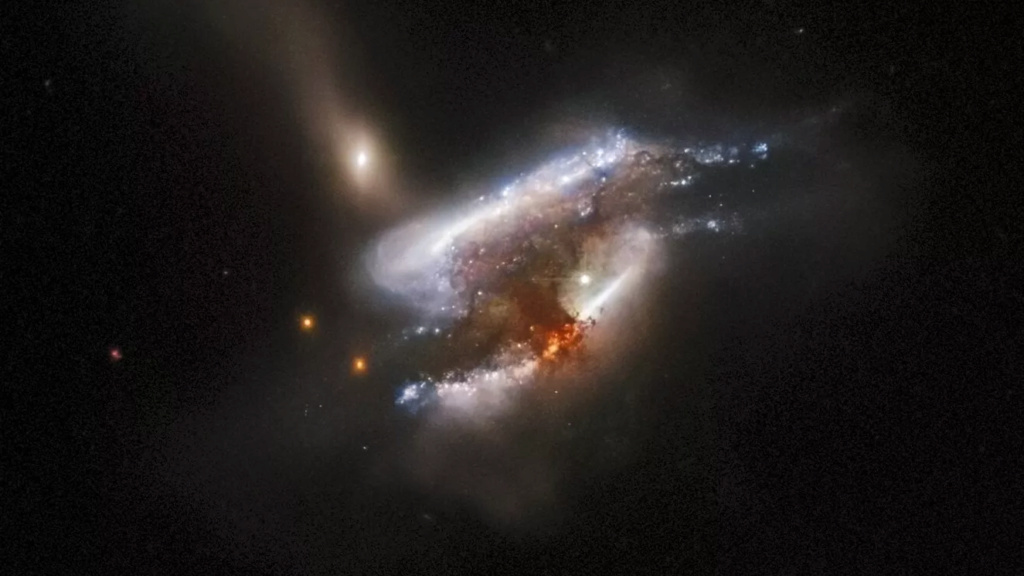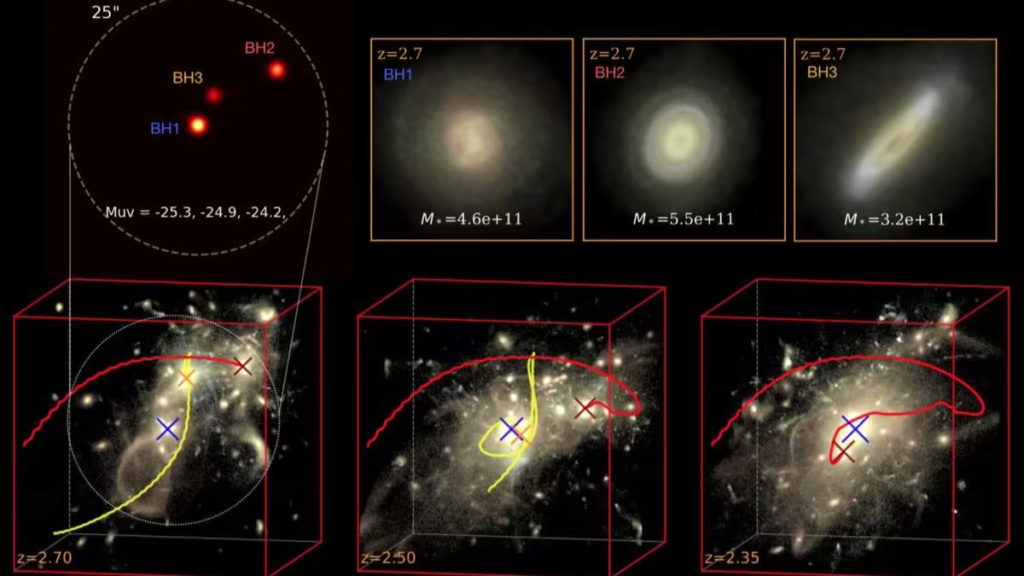!An exceptional discovery: a rare galaxy with three black holes leads astronomers to the most massive objects in the universe

A rare galaxy merger with three supermassive black holes at its center has led researchers to explore the possible origins of supermassive black holes.
Using high-resolution cosmological simulations, the researchers modeled the evolution of the universe as it appeared about 11 billion years ago, and witnessed the birth of a supermassive black hole after the merger of the three galaxies.
The team plans to perform a statistical analysis of the multiple quasar systems in the simulation to study the properties of the host galaxies, make mock observations, and track how the supermassive black hole is evolving.

Astronomers have long been fascinated by supermassive black holes, which are some of the largest objects in the universe. These cosmic monsters can be found in the centers of huge clusters of galaxies, which have masses over 10 billion times that of the Sun. However, its sheer size has baffled scientists for years.
Recently, a rare galaxy merger with three supermassive black holes at its center provided researchers with new insights into the origins of supermassive black holes.
Using a high-resolution cosmological simulation called Astrid, a team of researchers has modeled the evolution of the universe as it appeared about 11 billion years ago. In the simulation, the team observed the birth of a supermassive black hole after the merger of three galaxies. Each of these galaxies contained its own quasar, a supermassive black hole that feeds on gas and generates massive bursts of radiation. When the three quasars merged, they formed an even more massive black hole and released massive feeding doses that allowed the merged hole to reach a supermassive state.

According to the study's lead author, Yueying Ni, the team found "a very rare system containing three times as many quasars in the cosmic noonday period." The system was made up of three bright quasars powered by supermassive black holes, each of which resides in massive galaxies about 10 times the mass of the Milky Way.
The team's simulation showed that the trio of quasars merged over the course of 150 million years and formed the largest black hole in the entire simulation, with a mass of more than 300 billion times that of the Sun. Ni believes that the rarity of triple quasar systems may explain why supermassive black holes in the actual universe are so elusive.
She explained that "in an isolated galaxy, when a black hole grows large enough, it will deposit strong feedbacks on its surroundings and further limit the rapid growth of itself." In other words, the formation of a supermassive black hole with a mass even at the lower end of the spectrum (about 10 billion times the mass of the Sun) would happen only in very rare, extreme scenarios.
As follow-up work, the team intends to perform a statistical analysis of the multiple quasar systems in the ASTRID simulation to study the properties of the host galaxies, make mock observations, and track how the supermassive black hole and host galaxy evolve as the simulation yields.
Source : websites

